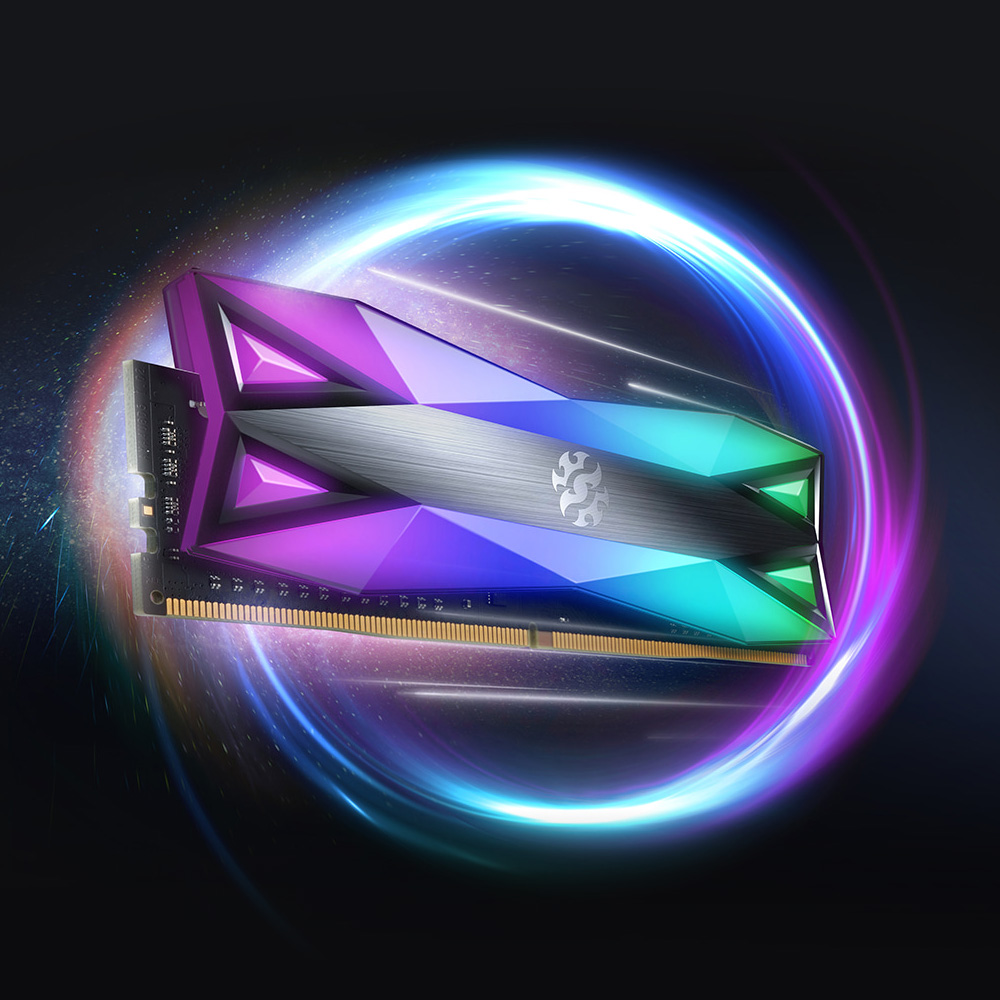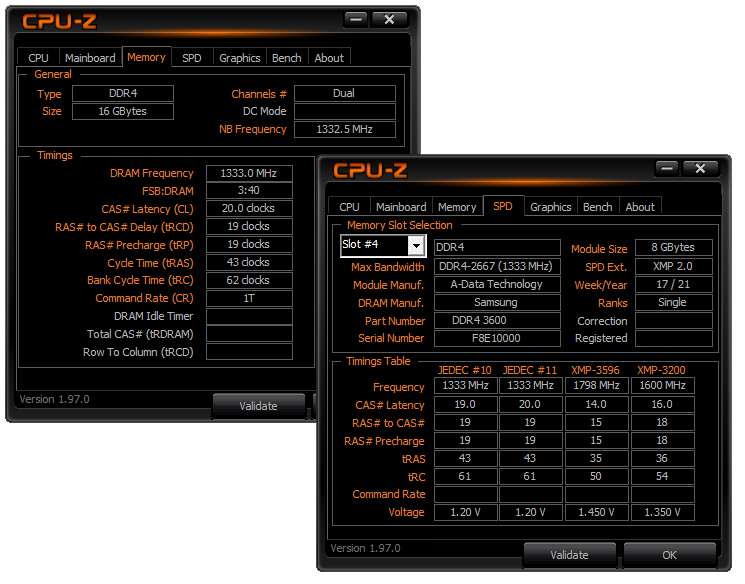Over the last thirty years, the RAM stick has evolved. For the gaming enthusiast, the bare bones, ugly grass-green RAM sticks of old are almost a distant memory. Instead replaced with futuristic heat spreaders and vivid RGB lighting functionality – for those that are that way inclined.
The XPG Spectrix D60G is no exception either. Boasting more RGB per mm2 than any competitor, which results in over 60% of the module’s surface area being brightly lit. It really is quite a sight to behold.

It has been commented that the moulded plastic heat spreader is designed in a way that mimics cut diamonds. Whilst it is true that each facet helps to reflect the light within, my personal opinion is that it instead resembles carved ice – the soft glow evoking the aesthetics of ice bars. The resulting display is simply mesmerising.
Despite its glamorous outer exterior, the Spectrix D60G’s looks are only half the story. How does it perform beneath its icy surface, and is it worth buying?
The Spectrix D60G 16GB memory kit consists of two single 8GB memory sticks carrying Samsung B-Die IC’s. B-Die chips are known for their low latency at high speeds and as the D60G is advertised to run at a wide frequency range of 3000-4133MHz you can be certain to find a kit that meets your needs.
In the case that your motherboard doesn’t support the advertised speeds out of the box (as is the case with my Gigabyte Aorus x470) The speeds default to DDR4-2666MHz and 19-19-19-43 timings. Despite this, faster speeds can be obtained through enabling XMP in the BIOS or overclocking.

There are two pre-programmed two XMP profiles in the Spectrix D60G. One operating at DDR4-3600MHz with 14-15-15-35 timings with a voltage of 1.45V and the other operating at DDR4-3200MHz with 16-18-18-36 timings and a voltage of 1.35V respectively.
So considering the competitiveness of the memory market, how does the Spectrix D60G compare to other popular modules in this price bracket? Here’s a quick rundown of some of its competition:
| Memory Kit | Capacity | Data Rate | Timings | Voltage | Price (as of 03/2022) |
| Adata XPG Spectrix D60G | 2 x 8GB | DDR4-3600 | 14-15-15-35 | 1.45V | £176.83 |
| Crucial Ballistix RGB | 2 x 8GB | DDR4-3600 | 16-18-18-38 | 1.35V | £156.00 |
| G.Skill Trident Z RGB | 2 x 8GB | DDR4-3600 | 16-16-16-36 | 1.35V | £178.42 |
| Gigabyte Aorus RGB | 2 x 8GB | DDR4-3600 | 18-19-19-39 | 1.35V | £199.93 |
| Corsair Dominator Platinum RGB | 2 x 8GB | DDR4-3600 | 16-18-18-36 | 1.35V | £144.99 |
As you can tell from the table above, the D60G offers low latency speeds at a very competitive price. Obviously, enthusiasts that enjoy tweaking their rigs may be able to find that they can adjust the speed of their RAM to suit them but for the everyday user, the Spectrix D60G is great value for money. It has actually increased quite steadily in price recently – as have most computer parts, obviously – so it might be wise to snap these up while they’re under the £200 mark. It’s not impossible that they could increase that far.
Typically, I feel that many users base the majority of their RAM purchases on speed first and looks a close second. These modules deliver on both counts, so really it’s just down to the style of build you’re going for. Otherwise, they occupy a space between mid to high range, and your choice comes down to minute differences or cosmetics.

XPG Spectrix D60G DDR4-3600 2x8GB overall thoughts?
All in all, though, the D60G performs really well for the money, and I believe that its aesthetics would probably suit a wide range of builds. It has a really sleek look that could fit anywhere and it looks great in any colour! Definitely, a serious contender if you’re looking for new RAM modules in this price bracket.
The Adata XPG Spectrix D60G can currently be found on Amazon for £119.55. Check out more of our hardware reviews here.